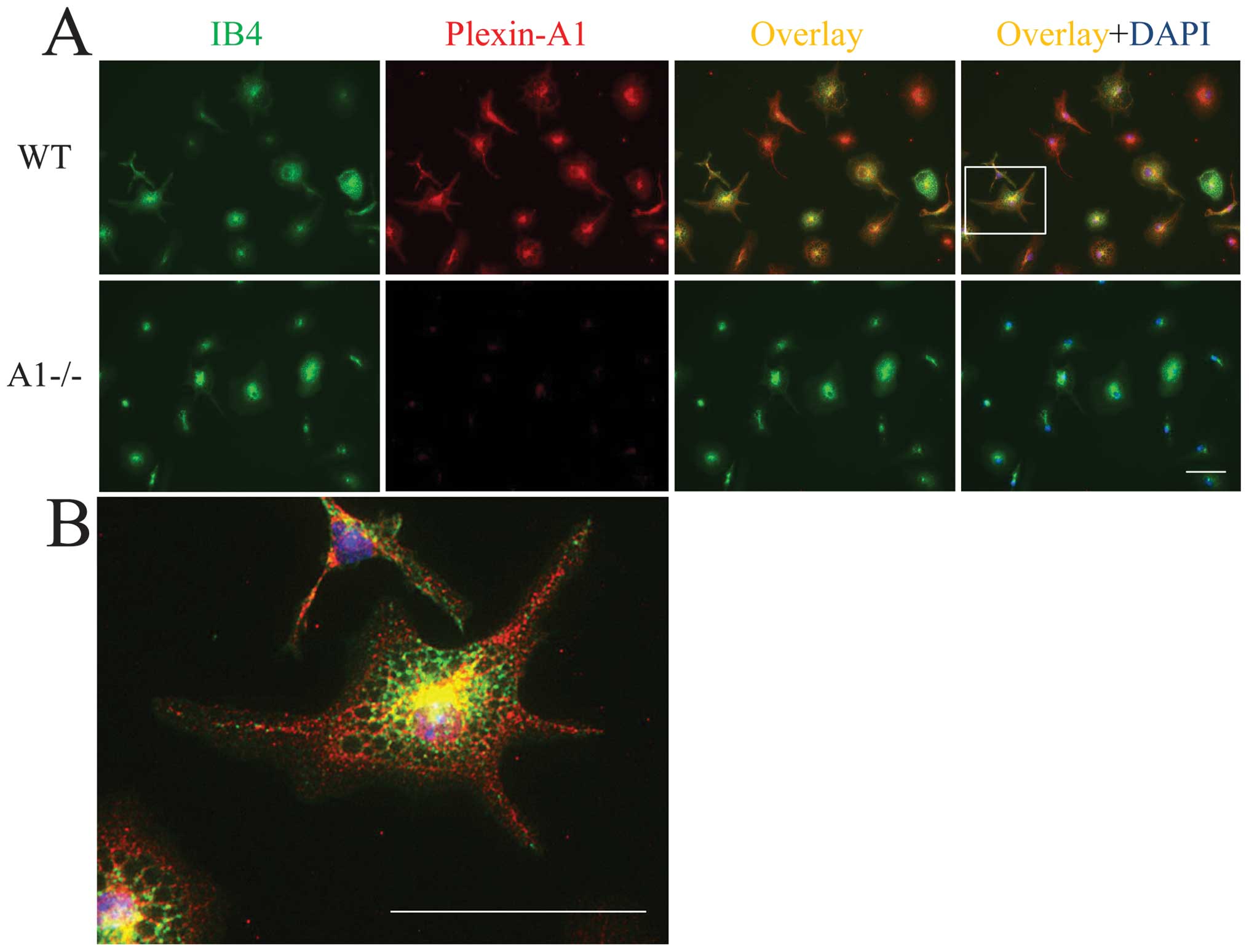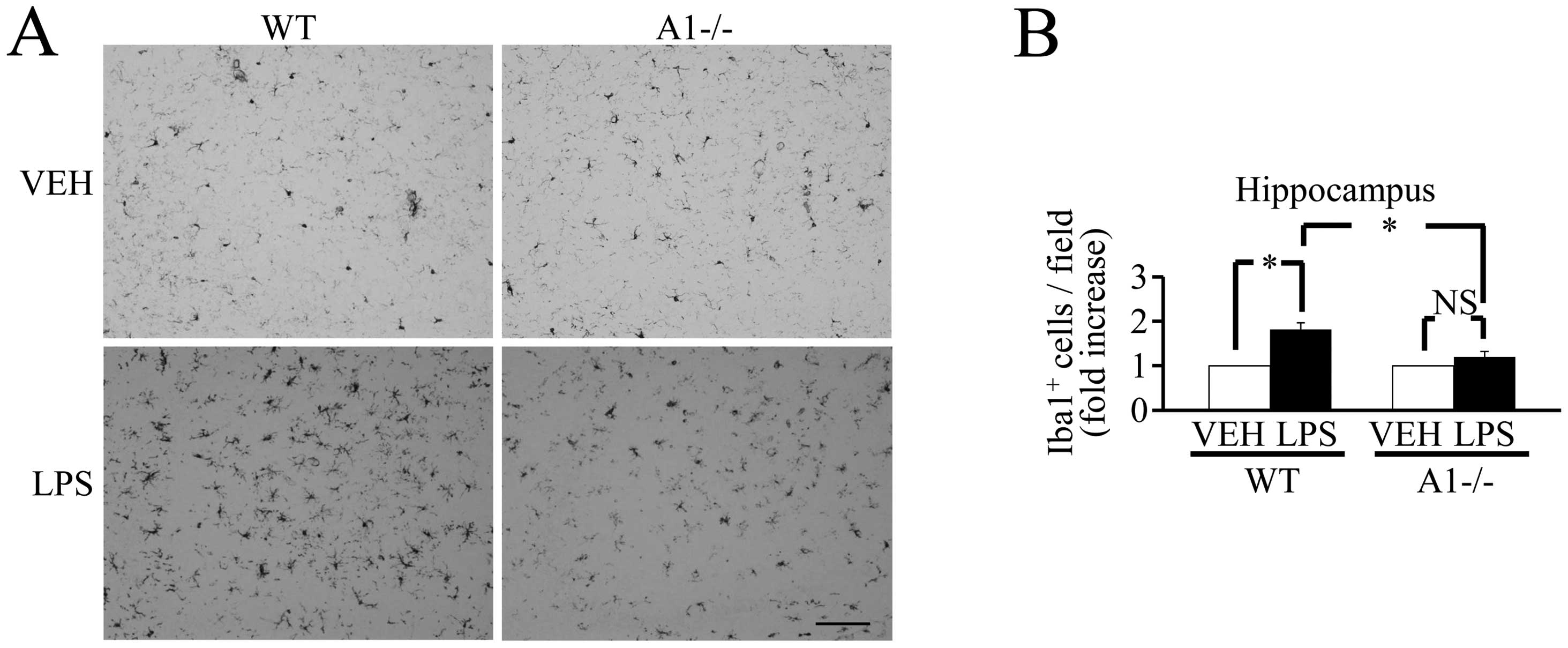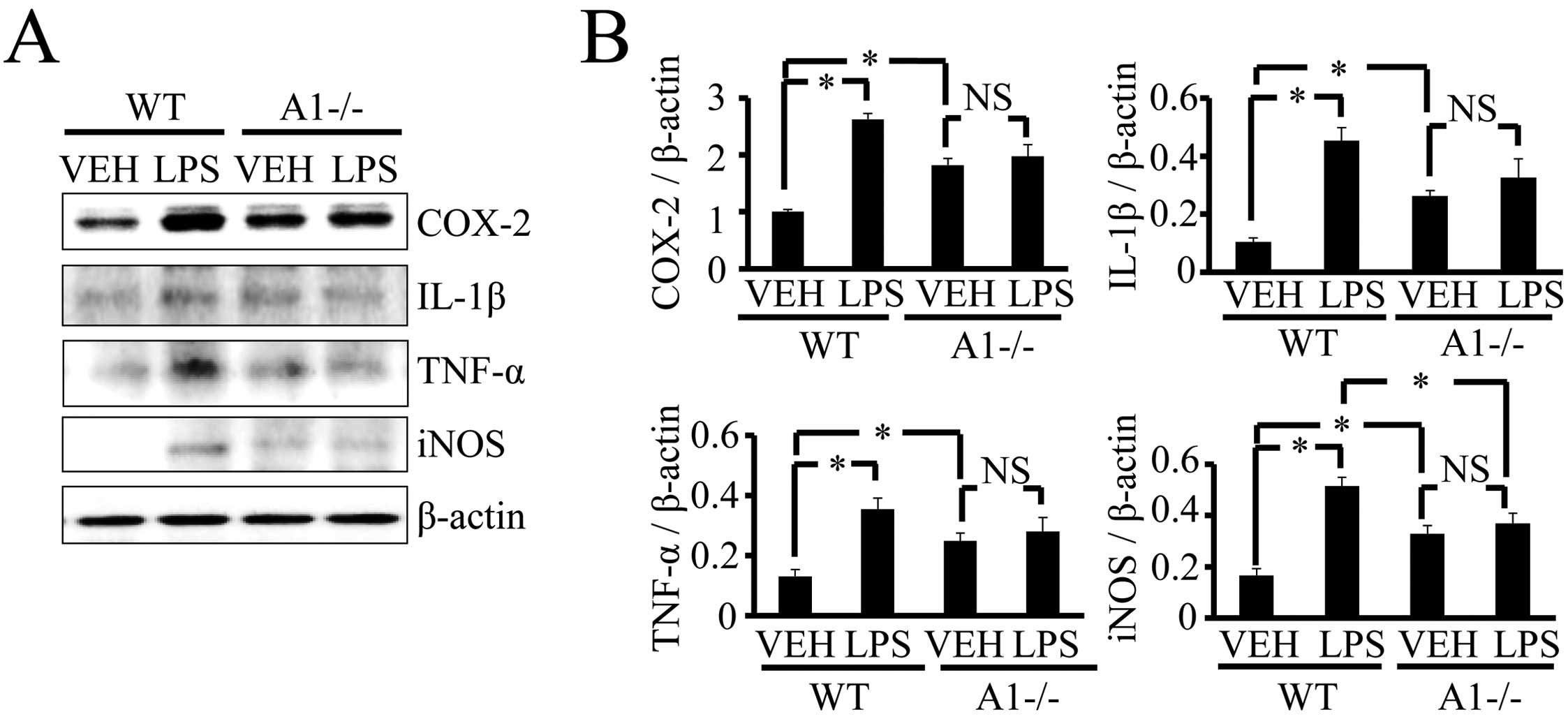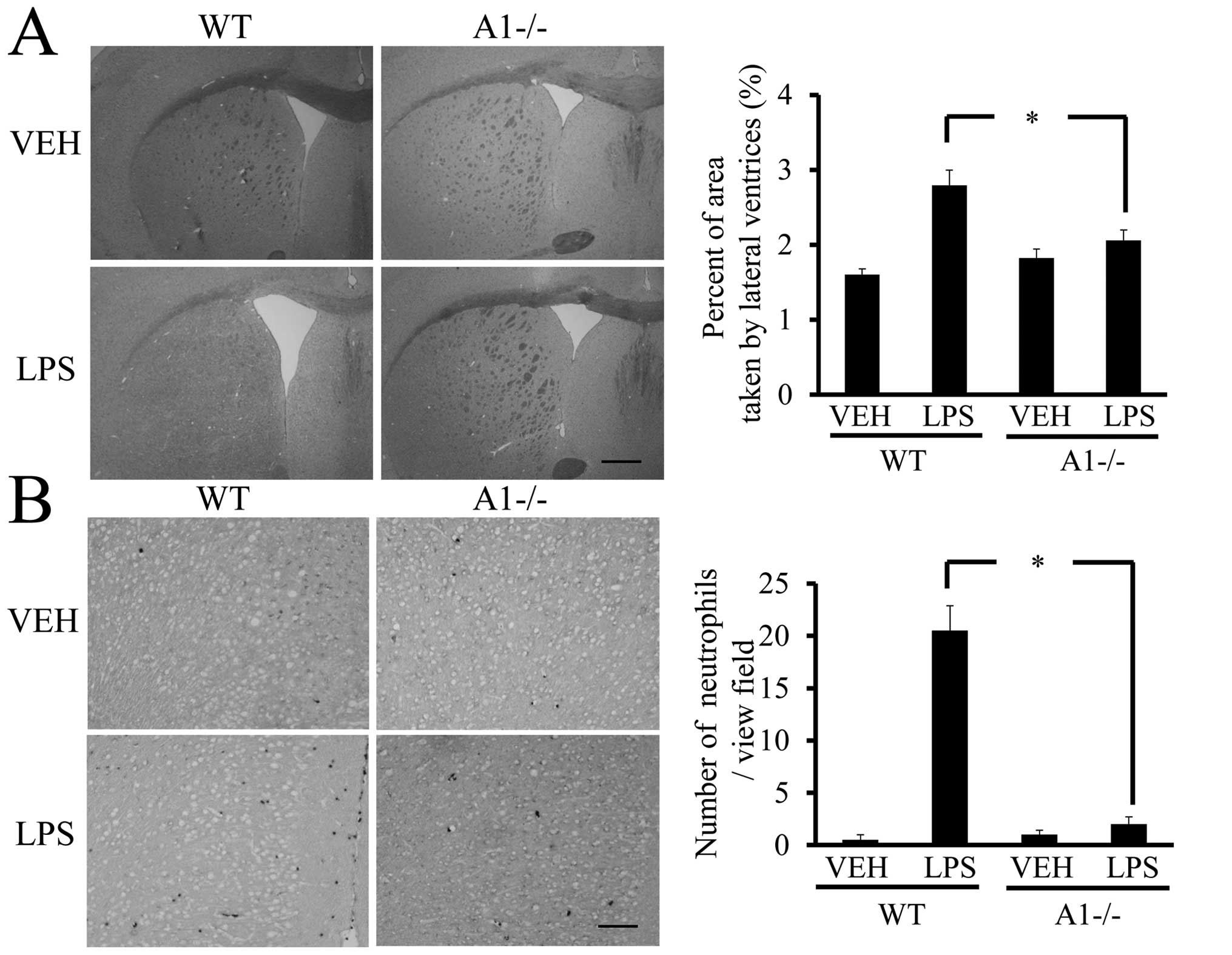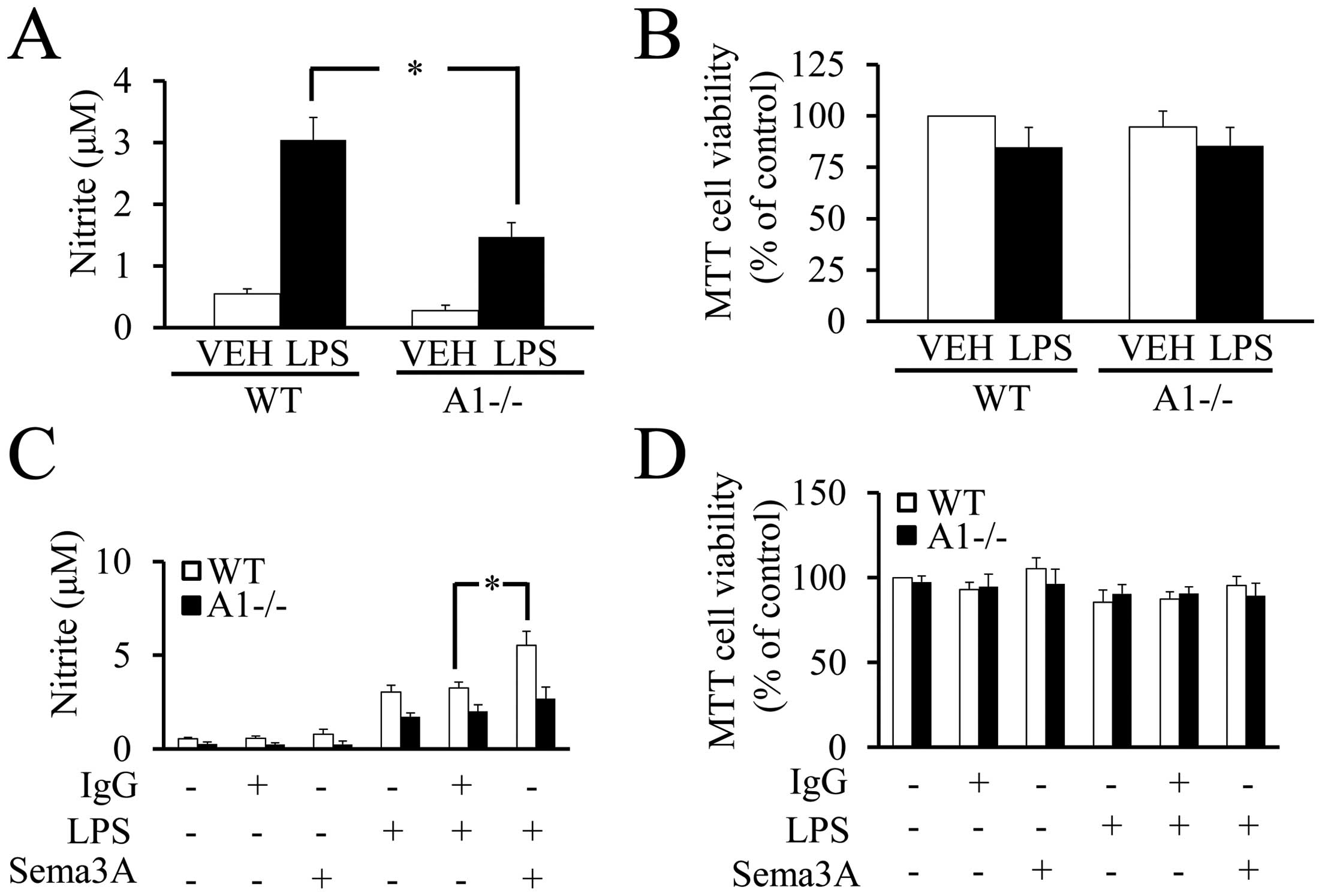|
1
|
Ransohoff RM and Perry VH: Microglial
physiology: unique stimuli, specialized responses. Annu Rev
Immunol. 27:119–145. 2009. View Article : Google Scholar : PubMed/NCBI
|
|
2
|
Heppner FL, Greter M, Marino D, et al:
Experimental autoimmune encephalomyelitis repressed by microglial
paralysis. Nat Med. 11:146–152. 2005. View
Article : Google Scholar : PubMed/NCBI
|
|
3
|
Jack C, Ruffini F, Bar-Or A and Antel JP:
Microglia and multiple sclerosis. J Neurosci Res. 81:363–373. 2005.
View Article : Google Scholar : PubMed/NCBI
|
|
4
|
Ponomarev ED, Shriver LP and Dittel BN:
CD40 expression by microglial cells is required for their
completion of a two-step activation process during central nervous
system autoimmune inflammation. J Immunol. 176:1402–1410. 2006.
View Article : Google Scholar
|
|
5
|
Lehnardt S, Lachance C, Patrizi S, et al:
The toll-like receptor TLR4 is necessary for
lipopolysaccharide-induced oligodendrocyte injury in the CNS. J
Neurosci. 22:2478–2486. 2002.PubMed/NCBI
|
|
6
|
Lehnardt S, Massillon L, Follett P, et al:
Activation of innate immunity in the CNS triggers neurodegeneration
through a Toll-like receptor 4-dependent pathway. Proc Natl Acad
Sci USA. 100:8514–8519. 2003. View Article : Google Scholar : PubMed/NCBI
|
|
7
|
Heppner FL, Greter M, Marino D, et al:
Experimental autoimmune encephalomyelitis repressed by microglial
paralysis. Nat Med. 11:146–152. 2005. View
Article : Google Scholar : PubMed/NCBI
|
|
8
|
Tessier-Lavigne M and Goodman SC: The
molecular biology of axon guidance. Science. 274:1123–1133. 1996.
View Article : Google Scholar : PubMed/NCBI
|
|
9
|
Pasterkamp RJ and Kolodkin AL: Semaphorin
junction: making tracks toward neural connectivity. Curr Opin
Neurobiol. 13:79–89. 2003. View Article : Google Scholar : PubMed/NCBI
|
|
10
|
Sekido Y, Bader S, Latif F, et al: Human
semaphorins A(V) and IV reside in the 3p21.3 small cell lung cancer
deletion region and demonstrate distinct expression patterns. Proc
Natl Acad Sci USA. 93:4120–4125. 1996. View Article : Google Scholar : PubMed/NCBI
|
|
11
|
Gu C, Rodriguez ER, Reimert DV, et al:
Neuropilin-1 conveys semaphorin and VEGF signaling during neural
and cardiovascular development. Dev Cell. 5:45–57. 2003. View Article : Google Scholar : PubMed/NCBI
|
|
12
|
Toyofuku T, Zhang H, Kumanogoh A, et al:
Guidance of myocardial patterning in cardiac development by Sema6D
reverse signalling. Nat Cell Biol. 6:1204–1211. 2004. View Article : Google Scholar : PubMed/NCBI
|
|
13
|
Kumanogoh A, Watanabe C, Lee I, et al:
Identification of CD72 as a lymphocyte receptor for the class IV
semaphorin CD100: a novel mechanism for regulating B cell
signaling. Immunity. 13:621–631. 2000. View Article : Google Scholar : PubMed/NCBI
|
|
14
|
Shi W, Kumanogoh A, Watanabe C, et al: The
class IV semaphorin CD100 plays nonredundant roles in the immune
system: defective B and T cell activation in CD100-deficient mice.
Immunity. 13:633–642. 2000. View Article : Google Scholar : PubMed/NCBI
|
|
15
|
Kumanogoh A, Marukawa S, Suzuki K, et al:
Class IV semaphorin Sema4A enhances T-cell activation and interacts
with Tim-2. Nature. 419:629–633. 2002. View Article : Google Scholar : PubMed/NCBI
|
|
16
|
Kumanogoh A, Shikina T, Suzuki K, et al:
Nonredundant roles of Sema4A in the immune system: defective T cell
priming and Th1/Th2 regulation in Sema4A-deficient mice. Immunity.
22:305–316. 2005. View Article : Google Scholar : PubMed/NCBI
|
|
17
|
Kikutani H and Kumanogoh A: Semaphorins in
interactions between T cells and antigen-presenting cells. Nat Rev
Immunol. 3:159–167. 2003. View
Article : Google Scholar : PubMed/NCBI
|
|
18
|
Elhabazi A, Marie-Cardine A, Chabbert-de
Ponnat I, Bensussan A and Boumsell L: Structure and function of the
immune semaphorin CD100/SEMA4D. Crit Rev Immunol. 23:65–81. 2003.
View Article : Google Scholar : PubMed/NCBI
|
|
19
|
Tamagnone L and Comoglio PM: Signalling by
semaphorin receptors: cell guidance and beyond. Trends Cell Biol.
10:377–383. 2000. View Article : Google Scholar : PubMed/NCBI
|
|
20
|
Granziero L, Circosta P, Scielzo C, et al:
CD100/Plexin-B1 interactions sustain proliferation and survival of
normal and leukemic CD5+ B lymphocytes. Blood. 101:1962–1969.
2003.PubMed/NCBI
|
|
21
|
Walzer T, Galibert L, Comeau MR and De
Smedt T: Plexin C1 engagement on mouse dendritic cells by viral
semaphorin A39R induces actin cytoskeleton rearrangement and
inhibits integrin-mediated adhesion and chemokine-induced
migration. J Immunol. 174:51–59. 2005. View Article : Google Scholar
|
|
22
|
Takahashi T, Fournier A, Nakamura F, et
al: Plexin-neuropilin-1 complexes form functional semaphorin-3A
receptors. Cell. 99:59–69. 1999. View Article : Google Scholar : PubMed/NCBI
|
|
23
|
Toyofuku T, Zhang H, Kumanogoh A, et al:
Dual roles of Sema6D in cardiac morphogenesis through
region-specific association of its receptor, Plexin-A1, with
off-track and vascular endothelial growth factor receptor type 2.
Genes Dev. 18:435–447. 2004. View Article : Google Scholar
|
|
24
|
Wong AW, Brickey WJ, Taxman DJ, et al:
CIITA-regulated plexin-A1 affects T-cell-dendritic cell
interactions. Nat Immunol. 4:891–898. 2003. View Article : Google Scholar : PubMed/NCBI
|
|
25
|
Shirvan A, Ziv I, Fleminger G, et al:
Semaphorins as mediators of neuronal apoptosis. J Neurochem.
73:961–971. 1999. View Article : Google Scholar : PubMed/NCBI
|
|
26
|
Fujita H, Zhang B, Sato K, Tanaka J and
Sakanaka M: Expressions of neuropilin-1, neuropilin-2 and
semaphorin 3A mRNA in the rat brain after middle cerebral artery
occlusion. Brain Res. 914:1–14. 2001. View Article : Google Scholar : PubMed/NCBI
|
|
27
|
Pasterkamp RJ and Verhaagen J: Emerging
roles for semaphorins in neural regeneration. Brain Res Brain Res
Rev. 35:36–54. 2001. View Article : Google Scholar : PubMed/NCBI
|
|
28
|
Majed HH, Chandran S, Niclou SP, et al: A
novel role for Sema3A in neuroprotection from injury mediated by
activated microglia. J Neurosci. 26:1730–1738. 2006. View Article : Google Scholar : PubMed/NCBI
|
|
29
|
Takegahara N, Takamatsu H, Toyofuku T, et
al: Plexin-A1 and its interaction with DAP12 in immune responses
and bone homeostasis. Nat Cell Biol. 8:615–622. 2006. View Article : Google Scholar : PubMed/NCBI
|
|
30
|
Zhou H, Lapointe BM, Clark SR, Zbytnuik L
and Kubes P: A requirement for microglial TLR4 in leukocyte
recruitment into brain in response to lipopolysaccharide. J
Immunol. 177:8103–8110. 2006. View Article : Google Scholar : PubMed/NCBI
|
|
31
|
Buttni M, Limonta S and Boddeke HW:
Peripheral administration of lipopolysaccharide induces activation
of microglial cells in rat brain. Neurochem Int. 29:25–35.
1996.PubMed/NCBI
|
|
32
|
Grin’kina NM, Karnabi EE, Damania D,
Wadgaonkar S, Muslimov IA and Wadgaonkar R: Sphingosine kinase 1
deficiency exacerbates LPS-induced neuroinflammation. PLoS One.
7:e364752012.PubMed/NCBI
|
|
33
|
Banks WA and Erickson MA: The blood-brain
barrier and immune function and dysfunction. Neurobiol Dis.
37:26–32. 2010. View Article : Google Scholar : PubMed/NCBI
|
|
34
|
Shaftel SS, Griffin WS and O’Banion MK:
The role of interleukin-1 in neuroinflammation and Alzheimer
disease: an evolving perspective. J Neuroinflammation. 5:72008.
View Article : Google Scholar : PubMed/NCBI
|
|
35
|
Wen H, Lei Y, Eun SY and Ting JP:
Plexin-A4-semaphorin 3A signaling is required for Toll-like
receptor- and sepsis-induced cytokine storm. J Exp Med.
207:2943–2957. 2010. View Article : Google Scholar : PubMed/NCBI
|
|
36
|
Durrenberger PF, Facer P, Gray RA, et al:
Cyclooxygenase-2 (Cox-2) in injured human nerve and a rat model of
nerve injury. J Peripher Nerv Syst. 9:15–25. 2004. View Article : Google Scholar : PubMed/NCBI
|
|
37
|
Lehnardt S: Innate immunity and
neuroinflammation in the CNS: the role of microglia in Toll-like
receptor-mediated neuronal injury. Glia. 58:253–263.
2010.PubMed/NCBI
|
|
38
|
Shin WH, Lee DY, Park KW, et al: Microglia
expressing interleukin-13 undergo cell death and contribute to
neuronal survival in vivo. Glia. 46:142–152. 2004. View Article : Google Scholar : PubMed/NCBI
|
|
39
|
Lee J, Hur J, Lee P, et al: Dual role of
inflammatory stimuli in activation-induced cell death of mouse
microglial cells. Initiation of two separate apoptotic pathways via
induction of interferon regulatory factor-1 and caspase-11. J Biol
Chem. 276:32956–32965. 2001. View Article : Google Scholar
|
|
40
|
Yang MS, Ji KA, Jeon SB, et al:
Interleukin-13 enhances cyclooxygenase-2 expression in activated
rat brain microglia: implications for death of activated microglia.
J Immunol. 177:1323–1329. 2006. View Article : Google Scholar : PubMed/NCBI
|
|
41
|
Choi SH, Aid S, Choi U and Bosetti F:
Cyclooxygenases-1 and -2 differentially modulate leukocyte
recruitment into the inflamed brain. Pharmacogenomics J.
10:448–457. 2010. View Article : Google Scholar : PubMed/NCBI
|
|
42
|
Burguillos MA, Deierborg T, Kavanagh E, et
al: Caspase signalling controls microglia activation and
neurotoxicity. Nature. 472:319–324. 2011. View Article : Google Scholar : PubMed/NCBI
|
|
43
|
Okuno T, Nakatsuji Y, Moriya M, et al:
Roles of Sema4D-plexin-B1 interactions in the central nervous
system for pathogenesis of experimental autoimmune
encephalomyelitis. J Immunol. 184:1499–1506. 2010. View Article : Google Scholar : PubMed/NCBI
|




